Derek the Hybrid Detective
DD0312b T. lineatispica or T. fasciculata ‘Fingers’
by Derek Butcher, February 2012
Apparently this plant has been grown in Australia as T. fasciculata ‘Fingers’ for many years having been imported as an unknown by Peter Tristram from Werner Krauspe in California. It offsets freely and when it decides to flower it produces long very thin spidery spikes which tend to brown off at the base but keep growing at the top. Flowers can be expected in the top portion.
About 3 years ago Peter Tristram let me have a plant called T. sp. that he had got from Werner Krauspe some 30 years ago. I was unaware that it had the nickname ‘Fingers’. It acclimatised and 6 months ago it started to flower. It was with trepidation that I watched the spikes die off at the base but the tips kept growing.
About two weeks ago Uwe Scharf, (Advisor to the Die Brom Editor on all things technical), called in on his way to a walking tour in the Flinders Ranges.
He was asked how you identified a Tillandsia when it did not flower. AND he said "What is that blue thing sticking out there?" He gave no opinion other than to say "Wait!"
The plant has done its deed and I am convinced it is T. lineatispica.
The only problem is that it is said to come from the Virgin Islands in the Caribbean. Could this plant have come from there?
It is said that T. lineatispica is a natural hybrid between T. utriculata and T. fasciculata. You would expect a natural hybrid to be called T. xlineatispica but I leave those sorts of decisions to the taxonomists. Mind you, there is at last one species with an ‘x’ which I consider to be a true species! To my mind, when you get these two species in the same vicinity it is feasible they would hybridise so this could well happen on the Mexican mainland. But then, any from the ‘Utriculata’ complex could give similar looking progeny. It would also seem you can get a big T. utriculata and a big T. fasciculata to mate to give a huge T. lineatispica that Dennis Cathcart grows. Then you could get our medium sized one that is closer to the description and drawing in Smith & Downs.
What does intrigue me is how it got linked to T. fasciculata where all self-respecting forms have petals that bend outwards at the tips. Our plant has flowers with petals almost cucullate (hooded or bending inwards) and you find this habit in T. utriculata.
So if you want to be more formal I suggest you change the name from ‘Fingers’ to T. lineatispica.
Some may wonder why it is not T. xlineatispica to show it is a natural hybrid, but such are the quirks of taxonomy. Nobody has actually published this nothospecies name so it stays as it was originally published! Apparently suffixes can be changed like ‘ae’ to ‘iae’ but not prefixes!
For the technical minded the following reading may assist
Tillandsia lineatispica Mez, DC. Monogr. Phan. 9: 699. 1896.
Description from Smith & Downs page 937
Plant stemless, flowering 12 dm high.
Leaves rosulate, 6 dm long, densely pale lepidote throughout;
Sheaths elongate, minutely appressed-lepidote;
Blades linear, filiform-attenuate, 25 mm wide at the base, stiff, the scales appressed above, subspreading below.
Scape erect, stout, glabrous; scape-bracts erect, involute, imbricate, the lower ones foliaceous with long narrow strict blades reaching the inflorescence, the upper ones bright red, lepidote.
Inflorescence subdensely tripinnate, 3 dm long; axes glabrous;
Primary bracts strict, ovate, slenderly laminate, much shorter than the axillary branches, bright red, lepidote;
Branches pinnate with 2 or 3 subequal digitate spikes;
Spikes strict, short-stipitate, linear in outline, densely 16-24-flowered, about 15 cm long, 1 cm wide.
Floral bracts erect, imbricate, ovate-elliptic, apiculate, up to 27 mm long at anthesis, distinctly shorter than the sepals, coriaceous with a broad membranaceous margin, straight, carinate, closely and prominently nerved, purple-margined, the lowest minutely lepidote, the others glabrous;
Flowers erect; pedicels obconic, stout, 5 mm long.
Sepals narrowly elliptic, acute and apiculate, about 21 mm long, 11 mm wide, coriaceous, promi-nently nerved, glabrous, posteriorly connate for 4 mm;
Petals tubular-erect, 35 mm long at least; ( Butcher - ?white or violet with white top)
Stamens and pistil exserted.
Type. Eggers 3104 (holotype B, B photos 1191/8-10), St Jan,(St John) Virgin Islands, West Indies, 26 Dec 1887.
DISTRIBUTION. Saxicolous, 150-340 m alt, Virgin Islands and vicinity.
PUERTO RICO: Cerro Ventana, Vieques Island, 20-21 Feb 1914, Shafer 2979 (NY, US).
Flora of St. John, US Virgin Islands. Acevedo- Rodriguez, P., 1996
“All these species are common wide ranging taxa except one, T. lineatispica that is apparently endemic to St. John and neighbouring Vieques Island, Puerto Rico. The author notes that since the morphology is intermediate between T. utriculata and T. fasciculata, it may be nothing more than a hybrid between those taxa, but further research is necessary”
This is agreed by Harry Luther – see herbarium specimen at SEL 7 Oct 1998
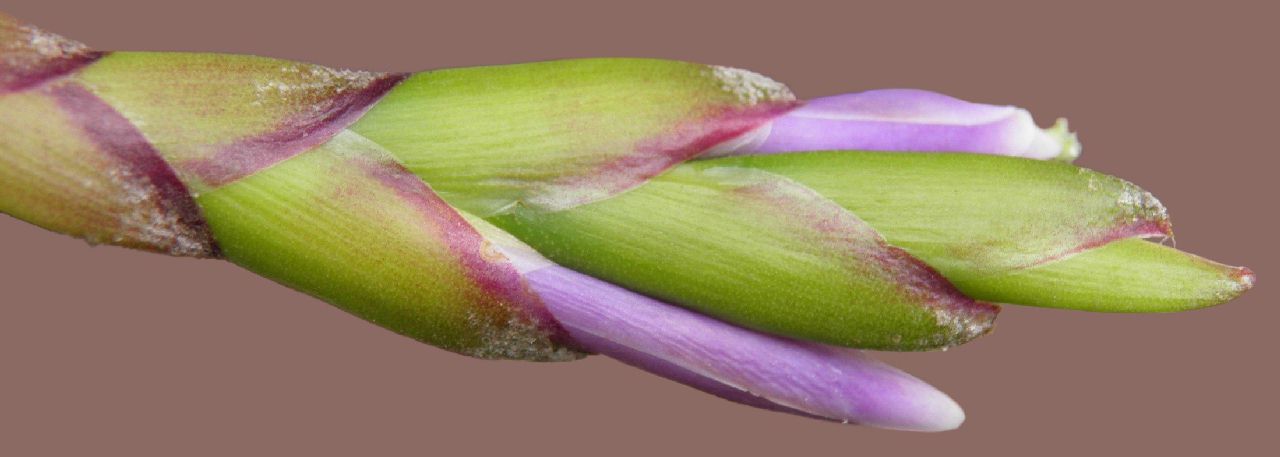
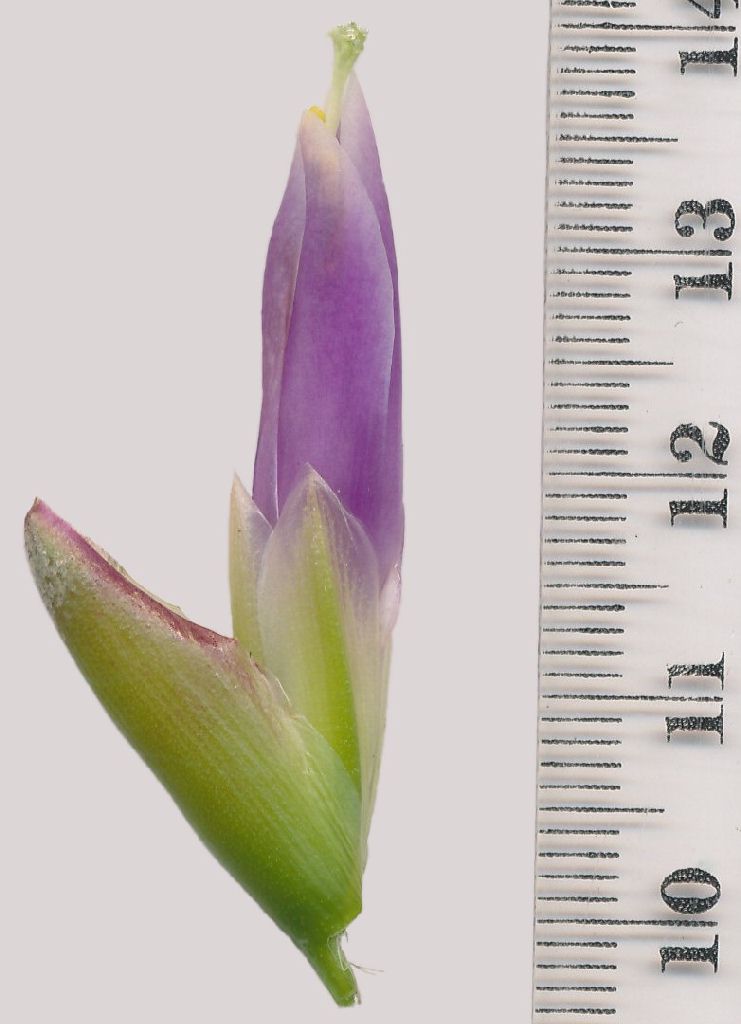
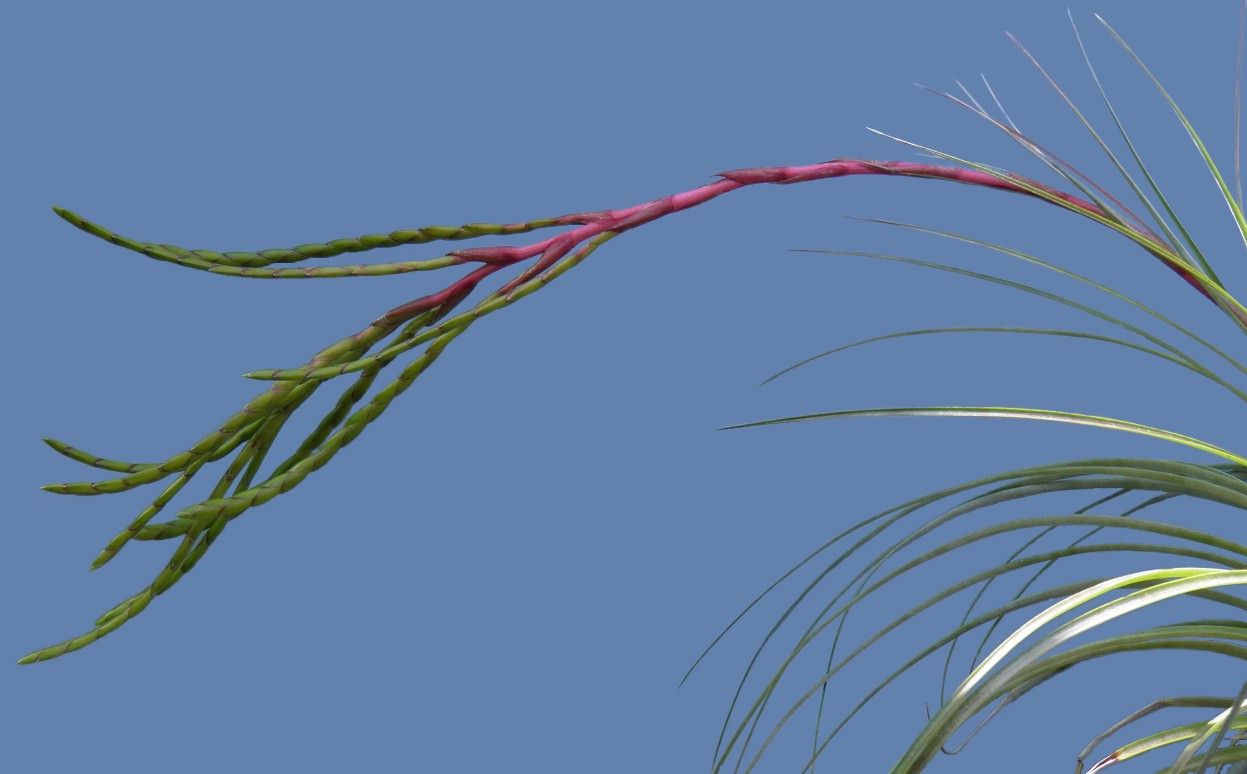
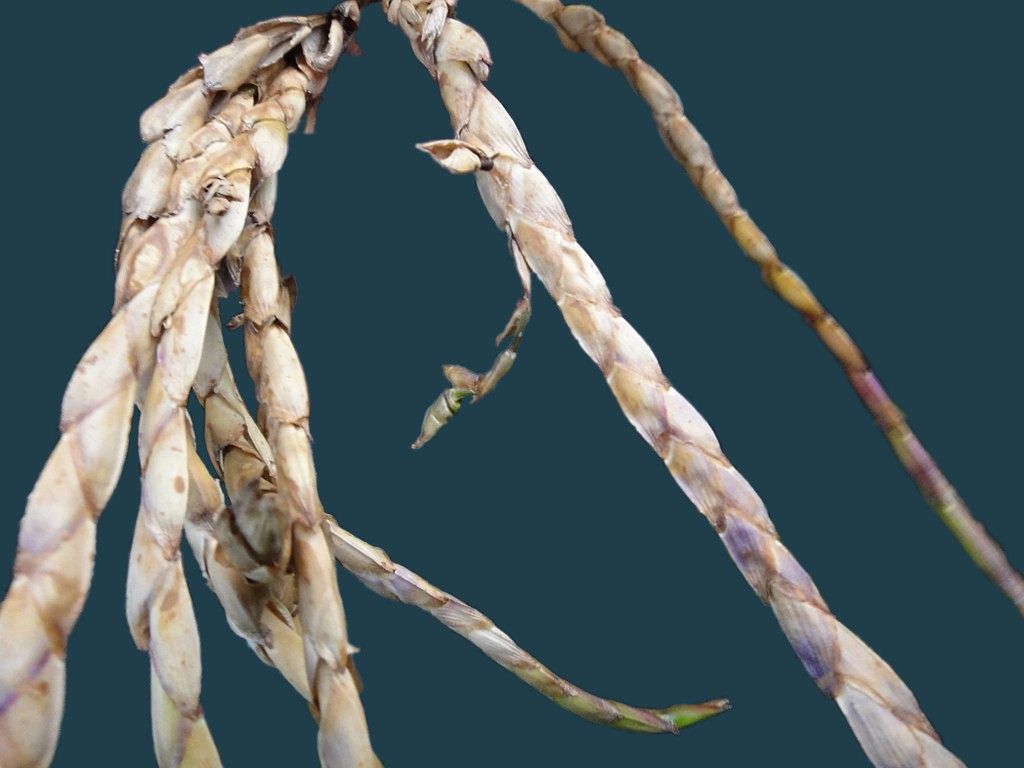
| Derek Butcher 02/12 as T. fasciculata 'Fingers'. |
Chris Larson 02/12. |
From Chris Larson...
"This is another of those plants that has started to flower again over 12 months since it last flowered. You can see the green tips that are slightly
out of focus, but more interesting is the odd little growth in the centre of the photo - there is a few of these on the plant. The flowers are just about
to start again.
See also Detective Derek DD1008. Natural Hybrid Talk.
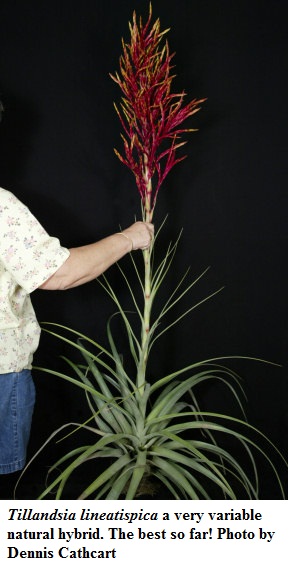
Updated 17/03/12




